Getting a Taste of Honda’s E-Clutch Technology

Is E-Clutch revolutionary or an answer to a question nobody asked?
Honda has a history of pushing the boundaries when it comes to introducing new tech. Sometimes it’s for the better, other times… not so much. Who remembers the airbag-equipped Gold Wing, or the oval-pistoned NR750? Both were technologies intended to make motorcycles safer or faster, but for one reason or another neither tech really caught on. If we look outside the moto world, Honda’s ASIMO human-like robot could one day clean our house and mow the lawn for us – or lead the charge in some dystopian future where robots and AI rule. Who’s to say?
Honda E-Clutch Technology
Haters are going to say Honda wasted their time, but lowering the barrier to motorcycle entry by developing a clutch-operating system that keeps the fun of shifting but takes away the fear of stalling has to be considered a good thing.
Highs
- (Almost) impossible to stall
- Buttery smooth shifts, every time
- You can go full-manual mode if you want
Sighs
- Better power delivery in full manual mode
- Watch your shins when you put your foot down
- Pricey compared to its peers
Moving back to motorcycles, Honda brought us Dual Clutch Technology back in 2010 with the VFR1200. Bringing riders the ability to shift with the push of a button – or leaving the shifting entirely up to the bike – has been an impressive engineering feat, and since then, DCT has found its way into a few other models, like the Gold Wing, Africa Twin, Rebel 1100, and NC750X. All with varying levels of success.
But DCT is complex and doesn’t make sense for every bike. Plus, there are still a legion of people who prefer shifting the old fashioned way – with a clutch lever and foot controls. Of course, the barrier to entry here is the same as it’s always been: figuring out how a clutch works and getting comfortable with the friction zone so you don’t end up stalling.
Here again, Honda’s coming up with new tech to lower that barrier. It’s called E-Clutch Technology. Critics will call it an answer to a question nobody asked, while others will praise it for helping to get more butts in seats, which is really what this industry needs anyway. Regardless of which camp you’re in, the internet is full of misconceptions about what E-Clutch Technology really is, despite our own Dennis Chung giving a very good primer on what it is. Now that I’ve had a chance to try it firsthand, let’s set the record straight.
What is it?
The short answer is E-Clutch has the ability to semi-automate the shifting process. From the moment the motorcycle is turned on to the moment you shut it off, you can ride the bike without ever touching the clutch lever. You simply put the bike in first gear and ride away. It’s semi-automated because you (purposely) need to shift gears yourself – E-Clutch won’t change gears for you, unlike the automatic mode in Honda’s DCT. As your speed increases and you need to go up the gears, you click your foot like you always do. Then as you slow down, you downshift like normal, too. When you come to a stop you can leave the bike in gear and not worry about the clutch.
Junya Ono, Honda’s 39 year-old Lead Project Engineer, considers it an “evolution” of the manual transmission. “The goal was to keep everything that was fun about manual transmissions, but make it easier…” Consider it a blend of quickshifters, autoblippers, DCTs, and manuals.
As such, you still have full control over the clutch lever, too. Pull it in and change gears if you want, or turn the E-Clutch system completely off and revert back to your standard motorcycle.
How does it work?
The primer link above does a great job explaining the tech, so we’ll copy it here, plus add a few more details.
The E-Clutch adds an actuator unit to the right side of the engine. It houses two motors that operate the clutch, disengaging it as needed when the rider initiates a shift using a traditional lever with the left foot. The system takes into account various parameters, including vehicle speed, throttle position, engine speed, shift pedal load, clutch motor reduction gear angle, engine countershaft speed and the current gear position. The bike’s ECU manages the ignition timing and fuel injection systems to compensate as the clutch is engaged, similar to how a quickshifter operates.
However, the thing that separates E-Clutch from a quickshifter is its ability to partially apply the clutch during shifts. Because the shift shaft is split in two (one half for manual control, the other for automated control) this electronically-actuated half-clutch operation results in ultra smooth, and ultra fast, transitions from one gear to the next with dramatically reduced shift shock – or the lurch you feel from one gear to the next. Half-clutching is available at any rpm and in any gear.
Honda also added an operation feel setting to set the level of force required on the shift pedal to signal a change. Riders can independently set upshifting and downshifting between HARD, MEDIUM and SOFT levels.
Honda’s E-Clutch is relatively light, claiming a weight of 4.4 pounds vs the DCT’s 25 pounds, and most notably, it doesn’t require a new engine or transmission. That said, we were told you can’t retrofit E-Clutch to existing models (currently the 650cc inline-Four Hondas) because of the various sensors and electronics needed for the system to work. While unfortunate, Honda plans to introduce several models with E-Clutch technology over the coming years.
What's it like to ride?
Easy. Dating back to the Cub, Honda’s tried to make two wheels accessible to as many people as possible. E-Clutch continues that trend. I got to try it on the updated 2024 CBR650R and CB650R – the first models to receive the tech in the US – and while I didn’t know what to think at first, the learning curve was very easy to get over.
Speaking of which, there isn’t much to change from the usual starting procedure. To get the most of the tech, the bike needs to be in neutral before startup. Once running, the biggest thing to get used to is to resist the urge to pull in the clutch lever. Just click the bike into gear. The ECU electronically pulls in the clutch lever. If you’re dying to do something with your left hand, wiggle the clutch lever. You’ll notice a lot of play at this point because the clutch has been pulled in. A small green indicator light on the dash will tell you the system is operating. To go, all you do is roll on the throttle.
Honda took us to Atlanta Motorsports Park to sample the bikes in a closed environment, free from traffic. Setup in the vast parking lot, I rolled on the throttle gently to see what it was like. You can feel the clutch slipping while the 650 gets underway until the ECU decides there’s enough speed to disengage entirely and let the bike do its thing like normal. On the other side, I tried a fast start, full-gas from a dead stop. You still feel the slippage, but it goes away quickly and you’re still plenty fast enough to beat car traffic off the line. That said, experienced riders can launch the bike faster manually. Which, if you want, is entirely possible. Pull the clutch in to override the system, launch yourself, and E-Clutch will take over after a second. It’s really easy.
However, you can still stall the bike. If you take over clutch operation and pull the clutch in at a stop, or if you start the bike in gear by pulling the clutch in, simply dumping the clutch will stall the bike.
Out on track, the system was effectively acting like an autoblipper. Because it is. Upshifts are self-explanatory at this point, though I did hit a false neutral when I didn’t click the lever with my foot hard enough. Downshifts are buttery smooth as well, with the E-Clutch executing perfect rev-matched downshifts each time. On the 650s, you’re approaching Turn 1 in sixth gear and you need to drop down to second. With E-Clutch, I could smash down through the gears three times very quickly, but in order to protect itself from over-revving, I had to pause a tiny bit to let the revs lower before my last downshift into second. All the while, the engine speed was nicely matched to the wheel speed. Just for kicks, I tried to hit first gear, but the ECU wasn’t having it until I scrubbed even more speed and brought the revs down further. In these scenarios you can kick down on the shifter all you want, but it doesn’t budge until the ECU decides you won’t blow the engine with a downshift.
An interesting feature of the system is the ability to independently adjust the sensitivity on the lever for both upshifts and downshifts between three settings: Hard, Medium, and Soft. Having tried all three on the track I’d say the difference is noticeable – but only just. It’s a tiny bit, even from Soft to Hard, and I found Medium to be the nice, happy, well…medium.
Once I got used to riding with the E-Clutch, I went into the menu screen and turned it all off. Now I was in full manual mode. Besides the obvious difference of having to use the clutch lever again, I was surprised with how much more drive I felt from the throttle to the back tire. Coming out of slow-speed corners and accelerating was where I felt the difference the most, as the E-Clutch didn’t give me the same jump once I got back on the gas (because it was still slipping). Granted, it’s a small difference, but it’s noticeable.
On the street, I was happy to give up that minor difference in exchange for trouble-free, clutchless shifting. It doesn’t seem like such a big deal to use the clutch lever (and it really isn’t), but to me, having the option to free up that extra little bit of brain space to enjoy the ride and/or focus on traffic around me was an easy one to make.
Remember the bit earlier about half-clutching? This comes into clear focus on the street. Many quickshifters, whether aftermarket or OEM, deliver a sizeable blow when you upshift from first to second gear. Unless you’re at high rpm (like at the track), the “shift shock” is big from first to second because the difference in gear ratios is often biggest between these two gears. This is especially noticeable at street speeds, when upshifting at lower rpm. The Honda’s ability to half-clutch dramatically reduces the shift shock between first and second gear. It’s hugely impressive.
Honda’s big on safety, and I think the difference between using the E-Clutch versus shifting manually goes from minor to major in an emergency situation where you don’t have time to downshift in a hurry. Traditionally when you have to panic brake (especially to a full stop), you’d pull the clutch in to avoid stalling the bike. Once clear, you can downshift and be on your way. But it’s easy to forget to pull in the clutch in an emergency stop. At which point you’ve stalled the bike in whatever gear you were in.
With the E-Clutch, none of that matters. If you need to stop, just stop. Even if that means stopping in sixth gear. It won’t stall. Lights on the TFT display will flash, telling you to downshift, but the bike will keep running. You can even get rolling again – yes, in sixth gear – just by twisting the throttle to the stop. It’s sluggish and slow, but it’ll do it.
Negatives
No bike is perfect, and neither is the duo of 650s from Honda. Since the non-E-Clutch updates to the bike revolve mainly around looks, the engine itself remains unchanged. With it comes a noticeable lack of torque off the bottom end, especially compared to its parallel-Twin engined rivals. Of course, the flip side is the healthy power once the inline-Four is screaming.
As far as negatives for the E-Clutch, the slippage mentioned earlier compared to manual mode is one. So is the physical size of the motors attached to the clutch case. Depending on the size of your legs, it’s easy to bump your shins into it at a stop.
Some might consider this a positive, but Honda hasn’t raised the price of the 2024 CB650R ($9,399) and CBR650R ($9,899) compared to last year, despite the addition of E-Clutch. However, Hondas are routinely among the most expensive models in the class, which is again the case here. Of course you can make the argument that the E-Clutch is worth it, but that’s ultimately up to you.
Who's it for?
If, after reading this far, you still have your doubts, then you probably know this isn’t for you. Some people simply prefer to use the clutch and keep their left hands busy. There’s nothing wrong with that. But besides those who’ve already read this far and like what they see, if you need examples of the types of riding that can greatly benefit from an E-Clutch, think about people who use their bikes for their daily commutes. Navigating rush-hour traffic is stressful. Even more so if you live somewhere where splitting lanes is allowed. Not having to cover the clutch all the time is a big plus. Same goes for those who ride two-up often. The delicate clutch dance when you have a passenger on the back goes away with the E-Clutch system.
Lastly, I think a big demographic to benefit from an E-Clutch is new riders. Having the ability to manually use the clutch like normal gives a new rider the chance to learn proper clutch control. Once they master this fundamental skill, they can appreciate the benefits of the E-Clutch. However, I do think the 650 platform isn’t the ideal place for a new rider. Which brings us to…
The Future
Honda have already said you can expect E-Clutch technology to appear on more models. I assume some of those new models will be smaller displacement bikes to help appeal to these new/newer riders mentioned above. I can also see the Africa Twin, and other adventure bikes, benefitting from E-Clutch as, unlike the current DCT, E-Clutch would still give the rider the ability to wheelie the front over obstacles. It appears as though Honda’s aiming this tech towards smaller bikes and sporty models, as DCT is well suited for larger touring models like the Gold Wing, and Supersport models don’t really need the tech. Then again, maybe Honda has some tricks up its sleeve to surprise us…
So, to recap, you still have to shift with the E-Clutch. You simply won’t stall the bike. I don’t really see a scenario where it detracts from the riding experience. But old diehards might disagree. Is it right for you? If you have the cash, and you’ve read this far, it sure sounds like it.
In Gear

- Helmet: Arai Corsair-X Shogun
- Jacket: Alpinestars GP Plus v4
- Airbag: Alpinestars Tech-Air 3
- Gloves: Alpinestars Phenom Air
- Pants: Alpinestars Copper v3 Riding Jeans
- Boots: Alpinestars Superfaster
Honda E-Clutch Gallery
We are committed to finding, researching, and recommending the best products. We earn commissions from purchases you make using the retail links in our product reviews. Learn more about how this works.
Become a Motorcycle.com insider. Get the latest motorcycle news first by subscribing to our newsletter here.

Troy's been riding motorcycles and writing about them since 2006, getting his start at Rider Magazine. From there, he moved to Sport Rider Magazine before finally landing at Motorcycle.com in 2011. A lifelong gearhead who didn't fully immerse himself in motorcycles until his teenage years, Troy's interests have always been in technology, performance, and going fast. Naturally, racing was the perfect avenue to combine all three. Troy has been racing nearly as long as he's been riding and has competed at the AMA national level. He's also won multiple club races throughout the country, culminating in a Utah Sport Bike Association championship in 2011. He has been invited as a guest instructor for the Yamaha Champions Riding School, and when he's not out riding, he's either wrenching on bikes or watching MotoGP.
More by Troy Siahaan
























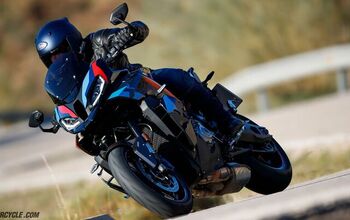
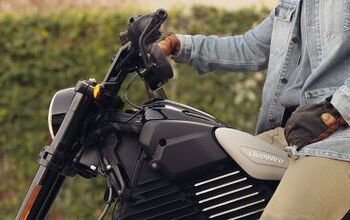
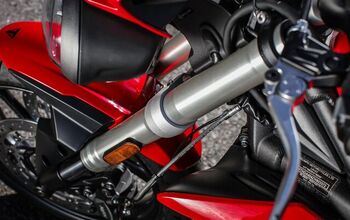

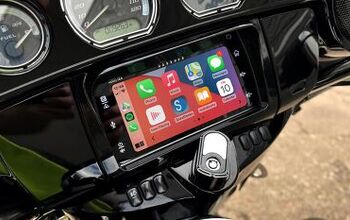


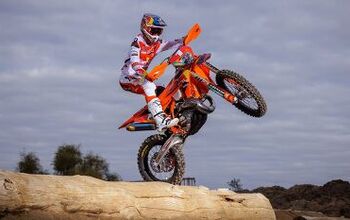
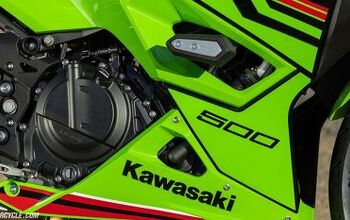








Comments
Join the conversation
Honda is such a conservative company and when they take daring chances these days, it's usually on something stupid and/or unnecessary like this. They should at least offer the full-manual version alongside of this for those that don't want this complication. I'm not saying it is a bad technology. I am saying it should be an option not forced on people. The main reason I never bought a Rebel 1100 is that it is only offered with a DCT transmission and not a manual. Hopefully this E-Cluch is more reliable than Honda CVTs.
I've accumulated some nerve issues and arthritis from riding something north of half-a-million miles on (mostly) sporty motorcycles.
This type of tech may become necessary to extend my riding career.